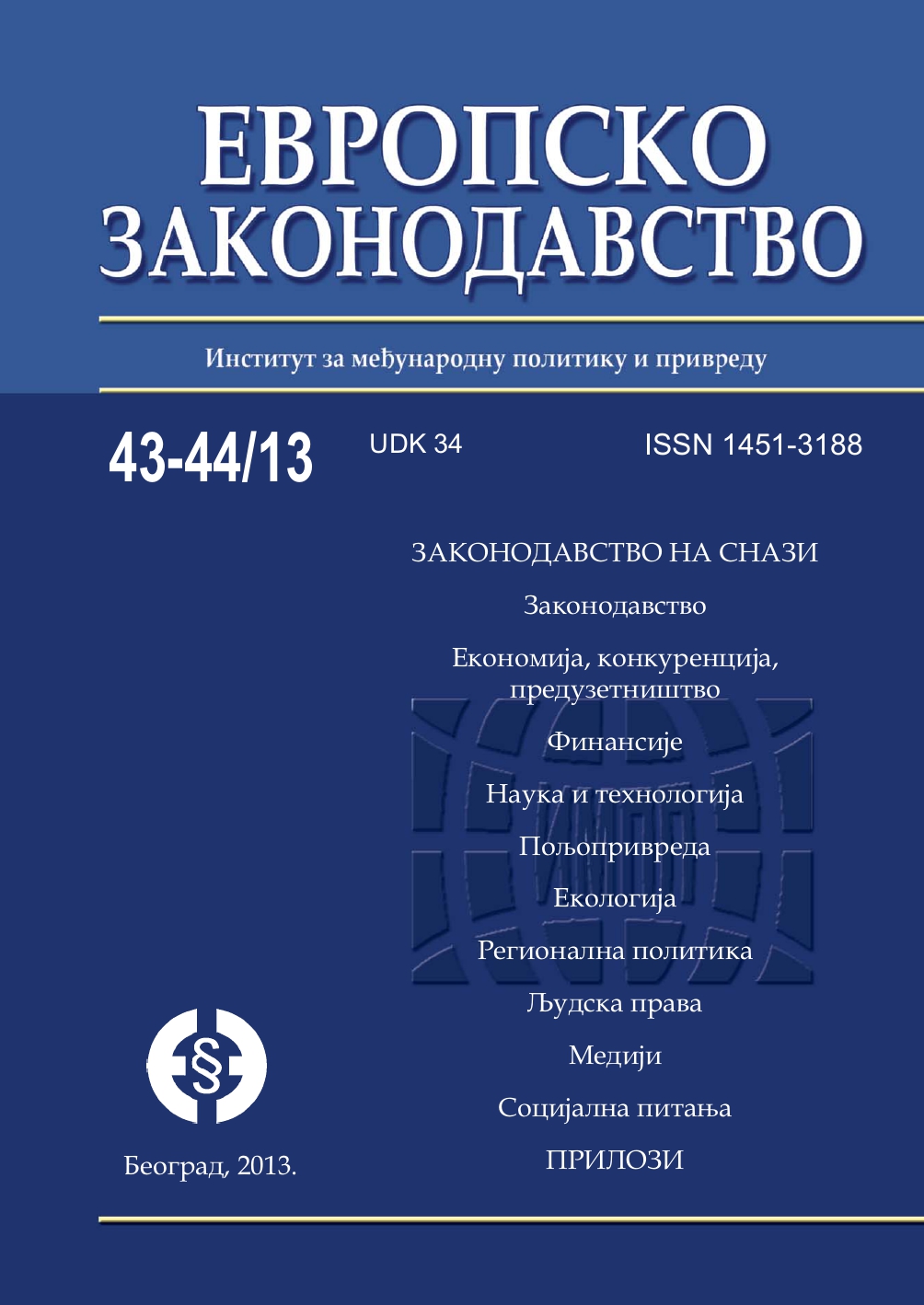Економски критеријуми чланства у Европској унији и значај за Србију
Economic criteria for membership in the European Union and importance for Serbia
Author(s): Vasilj Žarković, Jelena TešićSubject(s): Economy, EU-Legislation
Published by: Институт за међународну политику и привреду
Keywords: Enlargement policy;Copenhagen Criteria;economic criteria;Enlargement Strategy;Serbia Progress Report
Summary/Abstract: In economic terms, European Union represents integration with the highest achieved degree of integration. From the original six member states, it now includes 27 member countries. The enlargement process has been carried out in different time phases. Today, when the enlargement of the Union considers the Western Balkans, Iceland and eventually Turkey, enlargement policy remains one of the key segments of action of the EU institutions. For certain country, in order to become a full member of the EU, it is necessary to meet three key criteria – political, economic and institutional. These criteria are known as the Copenhagen Criteria. The subject of this paper is an analysis of the economic criteria of EU membership. First, we present the main documents which are governing the issue of compliance with the Copenhagen criteria, and documents which are regulating Serbia’s path to EU membership. Then, we explain in detail how the European Union and the Commission as its executive body, assesses fulfillment of the economic criteria of membership. This means that the Commission bases its analysis on certain economic indicators that are listed in the paper. Based on the Commission’s assessment, the paper determines the extent to which Serbia is fulfilling the economic criteria for membership in the period till 2012. This is the last year for which Progress Report for Serbia was made as a document in which fulfillment of Copenhagen Criteria is assessed. Significance of an analysis of meeting the economic criteria of membership is reflected in the fact that this analysis provides a realistic and independent assessment of the status and trends in the Serbian economy, which are not exactly optimistic.
Journal: Европско законодавство
- Issue Year: 2013
- Issue No: 43-44
- Page Range: 126-136
- Page Count: 11
- Language: Serbian

